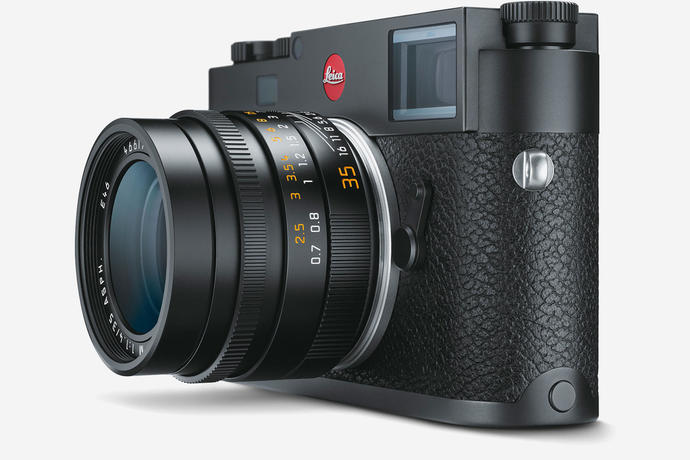With the recent launch of the Leica M10, I have been asked several times if I planned to upgrade to Leica’s latest camera. While the temptation is great, I went previously through a the process of listing the pro’s and the con’s of each digital Leica M camera and how it could impact my work on the streets. It soon became a War of the Leica M’s, which I am happy to share with all street photographers looking to upgrade to the new model or enter the Leica M world.

Leica M10 with ISO dial on top corner
Leica M8 – launched 2006
Exclusive features :
- 1/8000th shutter speed
- 1.3 crop factor CCD sensor
- IR photography
Main technical issues :
– need UV/IR filter on all lenses to avoid magenta drift.
– hot pixels on sensor (can only be fixed by a trip to Leica service facility)
– shutter failures
Used price : $1500
Greatest advantage : the 35mm frame-lines of the M8 are in my opinion the best of any M digital camera. A 46mm equivalent on full frame, it is a great field of view for street photography, somewhere between the 35mm and 50mm focal lengths. Moreover the 35mm frame-lines of the M8 provide the perfect balance between space inside and outside the field of view, allowing great anticipation of subjects coming in and out of the frame.
Opinion : At base ISO, the image quality of the Leica M8 is no slouch compared to its newer competitors. They are crispy, sharp and its colours are amazing. Its 10 megapixels limitation will be one only if you excessively crop or print really big (>40×60) . As for its 1.3 crop factor, it should actually be perceived as an advantage for street photography since it allows for a larger depth of field compared to the full frame sensors of its newer siblings. Finally, if your thing is too shoot wide open in daylight, it does not get any better than the 1/8000th max shutter speed of the Leica M8.
Yet this is a 2006 camera with its share of problems. The need to screw a UV/IR filter on every single lens is definitely a hassle (unless you are into infrared photography). A shutter failure would set you back hundreds of dollars and a hot pixel (generating a vertical strike on all pictures) would mean another month long to Leica’s service department. All these problems happened to me as my M8 visited Leica’s facilities four times.
If you do opt to purchase a used M8, make sure to buy it from a reliable seller, or even better from a dealer with some kind of warranty. The initial saving by going cheap (M8 can be found for less than $1’000) could be very quickly offset by high repair costs if the unit you acquire has hidden defects.

Mexico – Leica M8 unprocessed
Leica M9 – launched 2009
Exclusive feature :
- Full frame CCD sensor
Main technical issues :
- Sensor corrosion
Used price : $2500
It’s greatest advantage : though highly subjective, a lot of M9 owners love the way its CCD sensor renders colours. “Slide” or “film-like” are often words used to describe them. Nowadays, nothing that can’t be matched by the CMOS sensors and some photoshop skill. Nevertheless, if you just love to look at the raw product or shoot mainly JPG, the M9 pictures will often have you shout “Wouaaa” when they appear on your computer screen.
Opinion : This is the camera I still shoot with, 8 years after its launch. At base ISO, the file quality is amazing and simply enough for my needs. Noise becomes quickly a problem at around ISO1000 but it will be an annoyance only if you enjoy night street photography. 19 mega pixels are probably more than enough for 99% of street photographers. Nevertheless, the sensor corrosion problem is a big bummer. Leica took the right decision to provide a sensor replacement program free of charge. Yet, it does mean shipping your M9 for a one month trip to Leica’s service facility with no guarantee that it won’t happen again in the future.

Leica M9 – India unprocessed
Leica M240 – launched 2013
Excluisve features :
- Video
- Full frame CMOS sensor
- Live view
Used price : $4000
Main technical issues : none, this is a reliable camera
Greatest advantage : video … which is basically non relevant to street photography.
Opinion : Following Apple into its genius marketing strategy to call any Ipad, “the Ipad”, Leica came up with a model called “Leica M” and giving up on its long tradition of numbering cameras. A mess soon resulted and the Leica M became the M240 (based on version type). Not happy with the mess generated by the model number, Leica decided to add video, optional electronic viewfinder along with focus peaking and electronic frame-lines. While some of these additions were welcome for some photographers, most were useless for street photographers though the sensor did improve in terms of dynamic range and high ISO performance over the M9. Finally, the addition of live view was a logical step forward for those who like to experiment with other types of angles, though the rangefinder focusing system is definitely not the most adapted for it.
All in all, a step forward technologically and a big improvement in reliability for the M system. Yet, Leica basically transformed the Porsche 911 into a Macan with the Leica M240.
Leica M10 – launched 2017
Exclusive features :
- Manual ISO Dial
- Full frame CMOS sensor
- Live view
New price : $7000
Main technical issues : noen detected yet.
Greatest advantage : if you like to shoot at night into dark alleys, this is the one. The high ISO performance of the M10 basically allows you not to worry anymore about file quality in low light situations. The Auto-ISO system has also been greatly improved, so you can also shoot in the streets without worrying about ISO’s.
Opinion : Is the fourth iteration of the digtal M the good one for street photographers ? Probably the best one, but not yet the perfect M. The reduction of size of the Leica M10 is minimal (and probably a psychological one for film shooters) yet the ISO dial is a welcome addition. Indeed, the M10 has now all exposure parameters directly accessible on the camera without any need to enter the menu system. One could regret though that it wasn’t place on the right side of the camera next to the speed dial (so both speed and ISO can be operated one handed).
I also love the idea of having only three buttons to operate the menu system, this is what M simplicity is about. The removal of the video function makes sense since street photographers probably shot videos only to show friends that they could. Finally, the rendering of M10’s CMOS files are somewhere in between those of the M240 and the M9 which should be a good compromise for many shooters.
CONCLUSION
Which Leica M should I buy ?
- If you are into IR photography : M8
- If you are on a tight budget : M8
- If you need video : M240
- If money is no issue : M10
- If you want the best value for your money : M9 or M-E (rebadged M9)
The digital Leica M’s celebrated their 10 year anniversary not long ago and a lot of progress has been made with each new launch. The M10 is definitely the best M out there for street photographers as Leica decided to grant it back its reportage and street DNA. Therefore, if you have the money in your bank account (and your spouse approval), go for it without a doubt.
On the other side, the M9 will probably reach cult status sometimes in the future as being the first full format and last CCD sensor of the digital M line, The M9 is a great introduction into the Leica M line for a street photographer not willing to empty his bank account. Make sure though that its sensor has been replaced and buy from reliable seller or dealer with some kind of warranty. At an average of $2500 on the used market, it is clearly the best value for money you can get to experiment with the Leica M system.
On my side, I will stick with my M9 for the moment and maybe grab a used M10 in a couple of years. While we do enjoy a good standard of living in Argentina, the money is nowhere close the one we made while living in Europe. A month from now, I will also buy back my original M8 from a friend (thank you Simon!) since I do miss the camera and it will act as a much needed back-up to the M9.